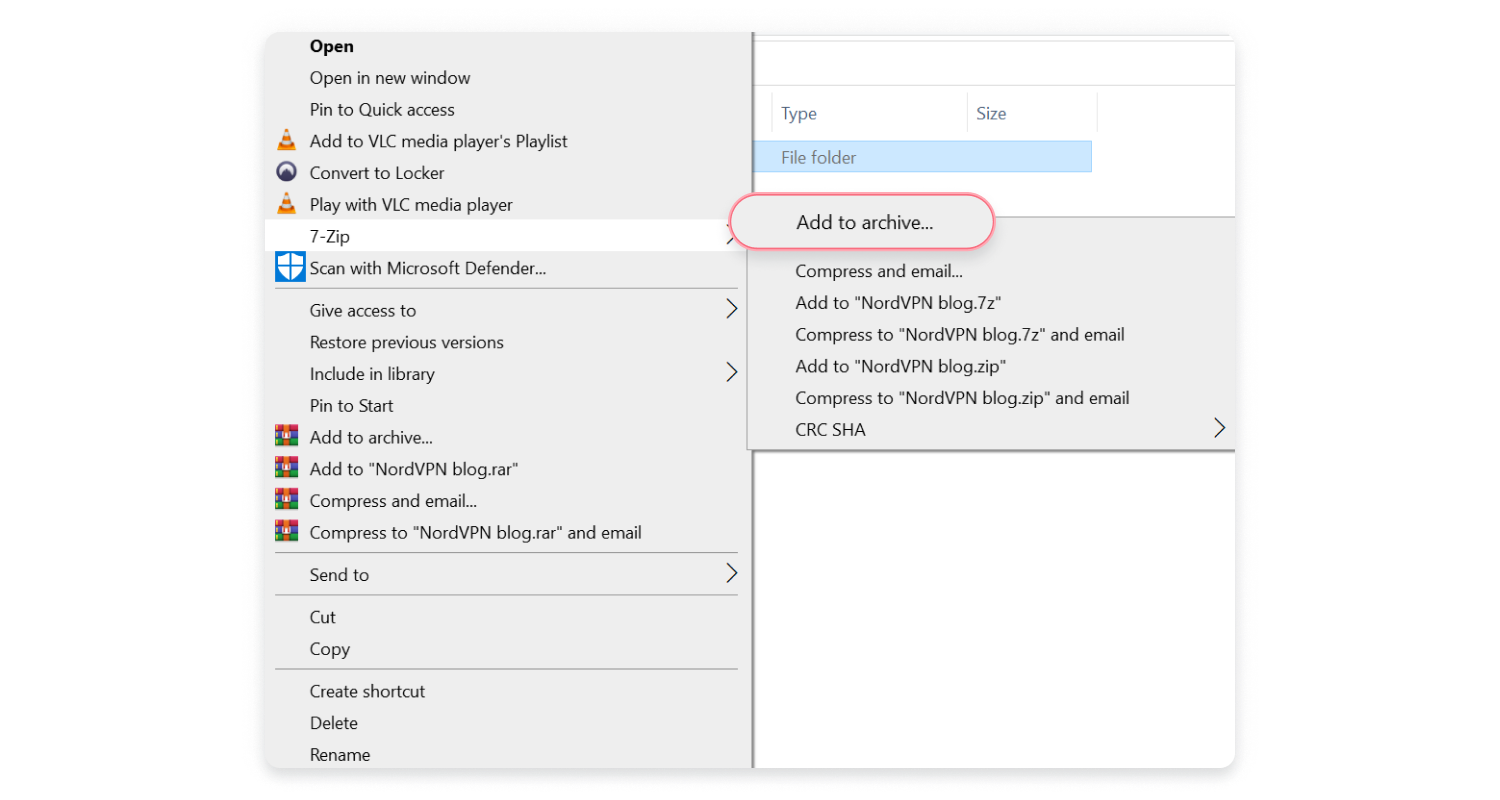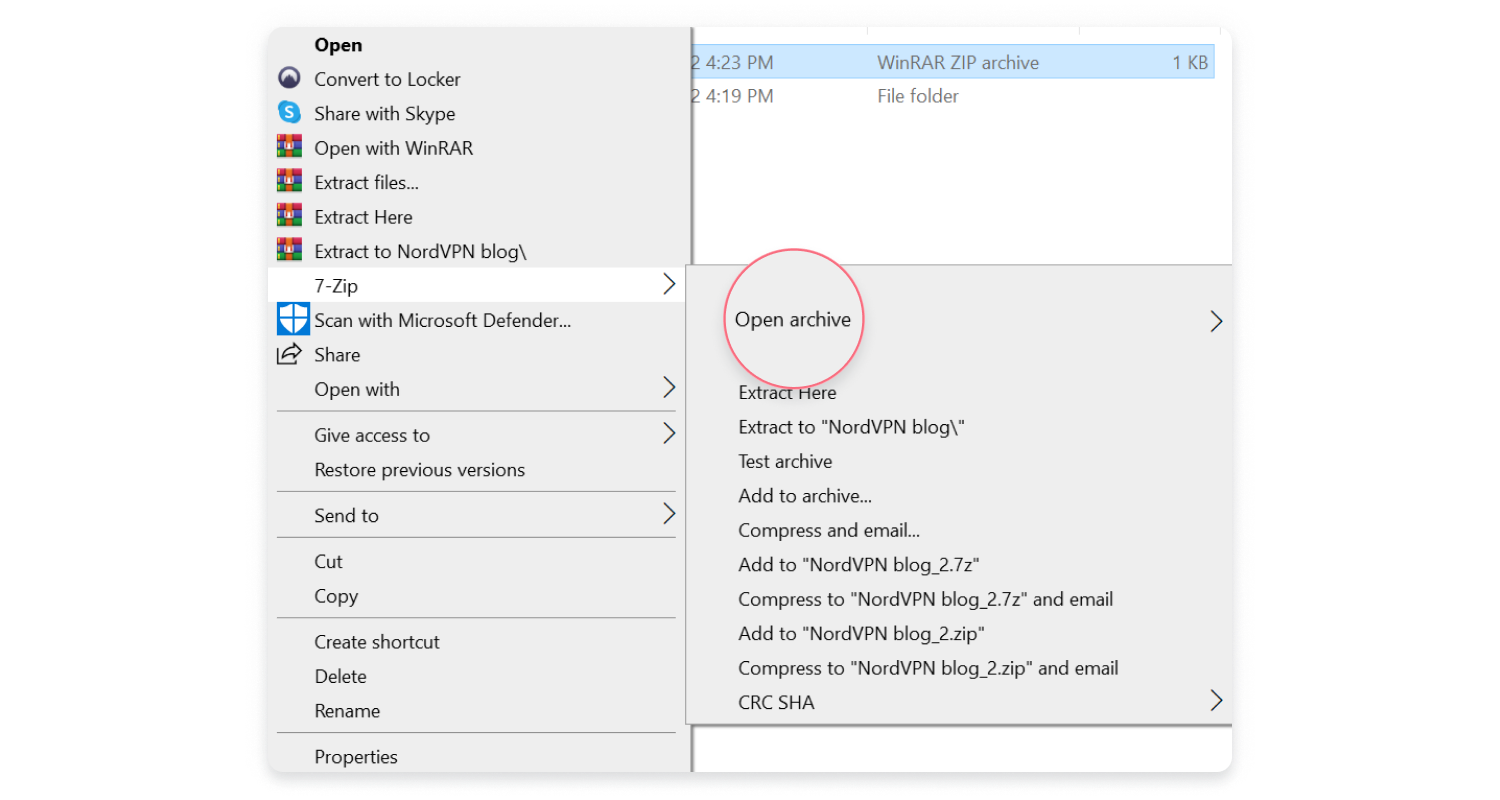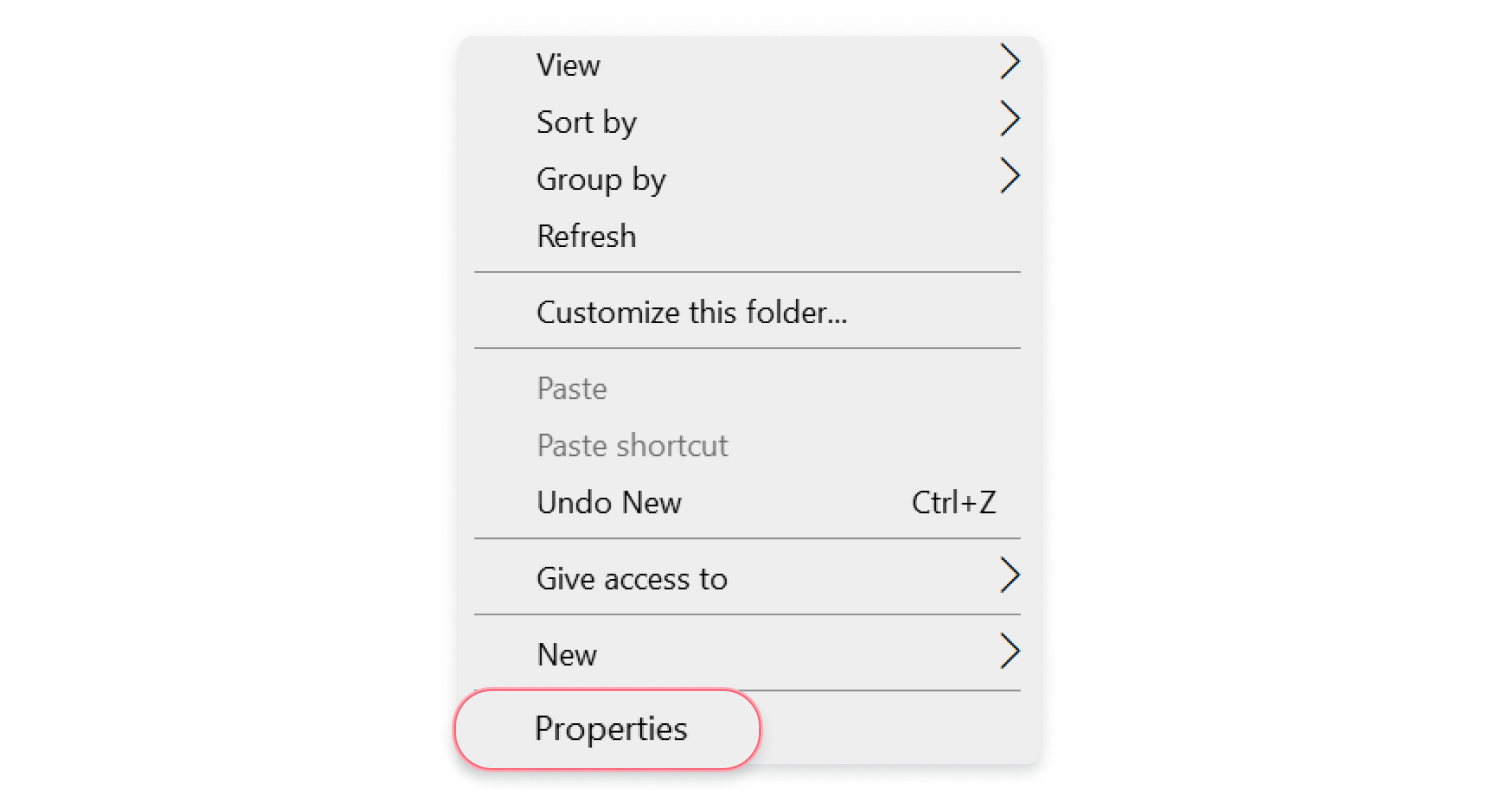How to password protect ZIP files and folders on PC
If you’ve ever had to send a number of attachments by email, you’ve most likely zipped your files. Zipping compresses files, but did you know you can also lock them so they stay secure from prying eyes? Here’s how to encrypt and password protect ZIP files before sending them to anyone.
Contents
Can you put a password on a zip file? Windows doesn’t have an option to protect your zipped file with a password, so there’s no other way but to use third-party tools. You can choose from various trusted software options, such as WinZip, WinRAR(read more about safely using WinRAR), and 7-Zip. For this tutorial, we’ve chosen 7-Zip as it’s free and offers AES-256 encryption standard (the same that NordVPN uses to protect your traffic from snoopers).
How to password protect a Zip file with 7-Zip
- Download 7-Zip. There are two 7-Zip versions: for Windows 32-bit and 64-bit processors. If you are not sure which one you need, check your system type by going to Settings > System > About > System Type.
- Right-click on the file you want to compress and encrypt. Select “7-Zip” and “Add to archive”.

- Choose “Archive format” as “zip” to compress your files.
- Under the Encryption section, you will find a password field. Type in your password twice.
- Under the Encryption method, choose “AES-256” and click “OK.”
- If your folder contains multiple large files, it may take a few moments for it to compress and encrypt. Congrats! You now have a password-protected compressed folder.
How to open a password protected file
The receiver can only access your files and folders if they have 7-Zip or a similar compression tool. If you are worried that the recipient won’t be able to open the file, you could choose ZipCrypto encryption instead of AES-256. Then the recipient can easily open it using File Explorer or Windows Explorer. However, we do not recommend this as it’s not as secure as AES-256.
To decrypt and access your files:
- Save the file to your device.
- Right-click on the folder. Choose “7-Zip” and “Open archive.”

- A new window will pop up. Double click on the encrypted folder and enter the password.
- Congrats: you now have access to the folders!
How to password protect a folder using Windows 10 Encrypting File System (EFS)
Windows 10 provides an encryption feature as well, and you can follow these simple steps to use it:
- Right-click a file or a folder, and click “Properties.”

- Click “Advanced” and tick the “Encrypt contents to secure data” box.
- Click “OK,” “Apply,” and then “OK.”
While it’s useful to have this feature available, it’s probably not enough on its own. This option is not designed for sending ZIP files specifically, and is only present in certain Windows 10 editions, such as Pro, Education, and Enterprise.
For users concerned with genuine security, especially when sending files, a third-party program is probably still the best bet. These will allow you to more comprehensively protect individual ZIP files and folders, both on your own device and in transit.
Is 7-Zip safe?
7-Zip uses strong encryption so it would be difficult for an attacker to access your folders unless they already knew your password. Make sure you choose a strong password that includes capital letters, digits, and random characters. (You can use the NordPass random password generator for this.)
Also, never send your password together with the encrypted files as this defeats the purpose of encryption. It’s better to send it via an encrypted messaging platform or an encrypted email.
However, don’t forget – no matter the encryption, anyone with access to the compressed folder will be able to see your file names, which can hint at the contents. Consider changing your file names so they wouldn’t include any sensitive and personally identifiable information. The recipient also needs a password, and if you can’t communicate it securely, your files will still be vulnerable.
How to hide a folder on Windows 10
Windows allows you to hide a certain file or folder from the file directory. This means that while technically your document will exist, nobody will be able to see it. However, this method shouldn’t be trusted to hide sensitive data because anyone can find hidden files with a couple of clicks.
- Right-click on the file or folder you want to hide and select “Properties.”

- Click the “General” tab and check the “Hidden” box under the “Attributes” section.

- Click “Apply.”

If you can still see the file or folder after following these steps, here’s what you need to do:
- Open Windows Explorer and select the “View” tab.

- Uncheck the “Hidden items” box.
Are there any other alternatives?
The NordVPN team also offers a powerful encryption tool called NordLocker. It can help you securely transfer your files via any platform (cloud, email, USBs and other means). NordLocker can store your data and files in an encrypted cloud server, allowing you to access them anywhere you need to. With NordLocker you don’t need to compress your files or protect them with a password. No one can read or open your documents except the intended recipient. How does this work?
Your files are encrypted using asymmetric key cryptography, meaning that you and the recipient generate private and public keys when you download the NordLocker app. The app then uses your recipient’s public key to encrypt your files.
Now the only way to decrypt this file is with the combination of your recipient’s public and private key. That means you don’t have to worry about sharing your passwords. NordLocker’s encryption and its zero-knowledge policy ensures ultimate security for your data.
Want to read more like this?
Get the latest news and tips from NordVPN.





